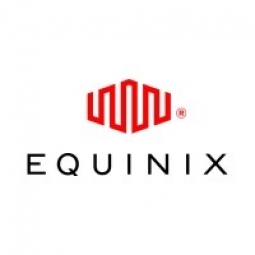
Technology Category
- Infrastructure as a Service (IaaS) - Public Cloud
- Sensors - Autonomous Driving Sensors
Applicable Industries
- Automotive
- Cities & Municipalities
Applicable Functions
- Logistics & Transportation
- Quality Assurance
Use Cases
- Vehicle Performance Monitoring
- Vehicle-to-Infrastructure
Services
- Cloud Planning, Design & Implementation Services
- System Integration
The Customer
Driver and Vehicle Standards Agency (DVSA)
About The Customer
The Driver and Vehicle Standards Agency (DVSA) is an executive agency of the UK government. DVSA's priorities include helping everyone through a lifetime of safe driving, helping everyone keep their vehicle safe to drive, and protecting everyone from unsafe drivers and vehicles. The agency employs 4,600 people in more than 500 locations, helping everyone stay safe on Britain's roads. DVSA carries out 1.9 million driving tests a year, regulates 40,000 driving instructors and 38,000 MOT garages. It also carries out 1 million annual tests to ensure lorries, buses, and coaches are safe to drive, and 278,000 roadside checks on drivers and vehicles, and monitors vehicle recalls.
The Challenge
The Driver and Vehicle Standards Agency (DVSA), an executive agency of the UK government, was facing a significant challenge in its digital transformation journey. The agency was transitioning away from long-term contracts, minimizing vendor lock-in, and moving towards open source and cloud solutions. This shift was aimed at improving efficiency, adding flexibility, and gaining value for money. However, the agency was encountering issues with its connectivity. DVSA was connecting to the cloud via virtual private networks (VPNs), but the VPN firewall ran out of capacity, necessitating an alternative solution. The challenge was to find a solution that would provide fast, reliable connectivity, essential for the agency's digital transformation.
The Solution
To address the connectivity issue, DVSA chose Equinix Fabric, a solution that directly, securely, and dynamically connects distributed infrastructure and digital ecosystems globally via software-defined interconnection. Available across more than 30 Equinix International Business Exchange (IBX) data center locations, ECX Fabric is designed for rapid scalability, real-time agility, and customized connectivity through a self-service portal or API. With every major cloud and IT service provider having a presence in IBX data centers, DVSA could easily connect staff to Amazon Web Services (AWS), Microsoft Azure, and other cloud providers via Equinix Fiber Connects. Switching from one cloud provider to another to save costs or enable additional services takes only minutes. DVSA's cloud connections run via its own MPLS network, without crossing the public internet, bringing its services and controls closer to citizens, employees, and partners at the digital edge.
Operational Impact
Quantitative Benefit

Case Study missing?
Start adding your own!
Register with your work email and create a new case study profile for your business.
Related Case Studies.

Case Study
Turning A Stadium Into A Smart Building
Honeywell created what it called the “intelligent system” for the National Stadium in Beijing, China, turning the venue for the opening and closing events at the 2008 Summer Olympics into a “smart building.” Designed by highly controversial artist Ai Weiwei, the “Bird’s Nest” remains one of the most impressive feats of stadium architecture in the world. The 250,000 square meter structure housed more than 100,000 athletes and spectators at a time. To accommodate such capacity, China turned to Honeywell’s EBI Integrated Building Management System to create an integrated “intelligent system” for improved building security, safety and energy efficiency.
.png)
Case Study
Smart Street Light Network (Copenhagen)
Key stakeholders are taking a comprehensive approach to rethinking smart city innovation. City leaders have collaborated through partnerships involving government, research institutions and solution providers. The Copenhagen Solutions Lab is one of the leading organizations at the forefront of this movement. By bringing together manufacturers with municipal buyers, the Copenhagen Solutions Lab has catalyzed the development and deployment of next-generation smart city innovations. Copenhagen is leveraging this unique approach to accelerate the implementation of smart city solutions. One of the primary focus areas is LED street lighting.

Case Study
Integral Plant Maintenance
Mercedes-Benz and his partner GAZ chose Siemens to be its maintenance partner at a new engine plant in Yaroslavl, Russia. The new plant offers a capacity to manufacture diesel engines for the Russian market, for locally produced Sprinter Classic. In addition to engines for the local market, the Yaroslavl plant will also produce spare parts. Mercedes-Benz Russia and his partner needed a service partner in order to ensure the operation of these lines in a maintenance partnership arrangement. The challenges included coordinating the entire maintenance management operation, in particular inspections, corrective and predictive maintenance activities, and the optimizing spare parts management. Siemens developed a customized maintenance solution that includes all electronic and mechanical maintenance activities (Integral Plant Maintenance).

Case Study
Buoy Status Monitoring with LoRa
The Netherlands are well-known for their inland waterways, canals, sluices and of course port activities. The Dutch Ministry of Infrastructure indicates that there are thousands of buoys and fixed items in and near water environments that would profit from IoT monitoring. One of the problems with buoys for example, is that they get hit by ships and the anchor cable breaks. Without connectivity, it takes quite some time to find out that something has happened with that buoy. Not to mention the costs of renting a boat to go to the buoy to fix it. Another important issue, is that there is no real-time monitoring of the buoys at this moment. Only by physically visiting the object on the water, one gains insight in its status.

Case Study
Barcelona Case Study
Barcelona’s heavy traffic and its associated high levels of pollution were the primary factors that motivated some companies and universities to work on strategies for improving traffic in the city centre. Bitcarrier is one of the technologies involved in the In4Mo Project, whose main objective is to develop the applications that form the core of smart mobility, one of the fundamental pillars of the smart city concept.








